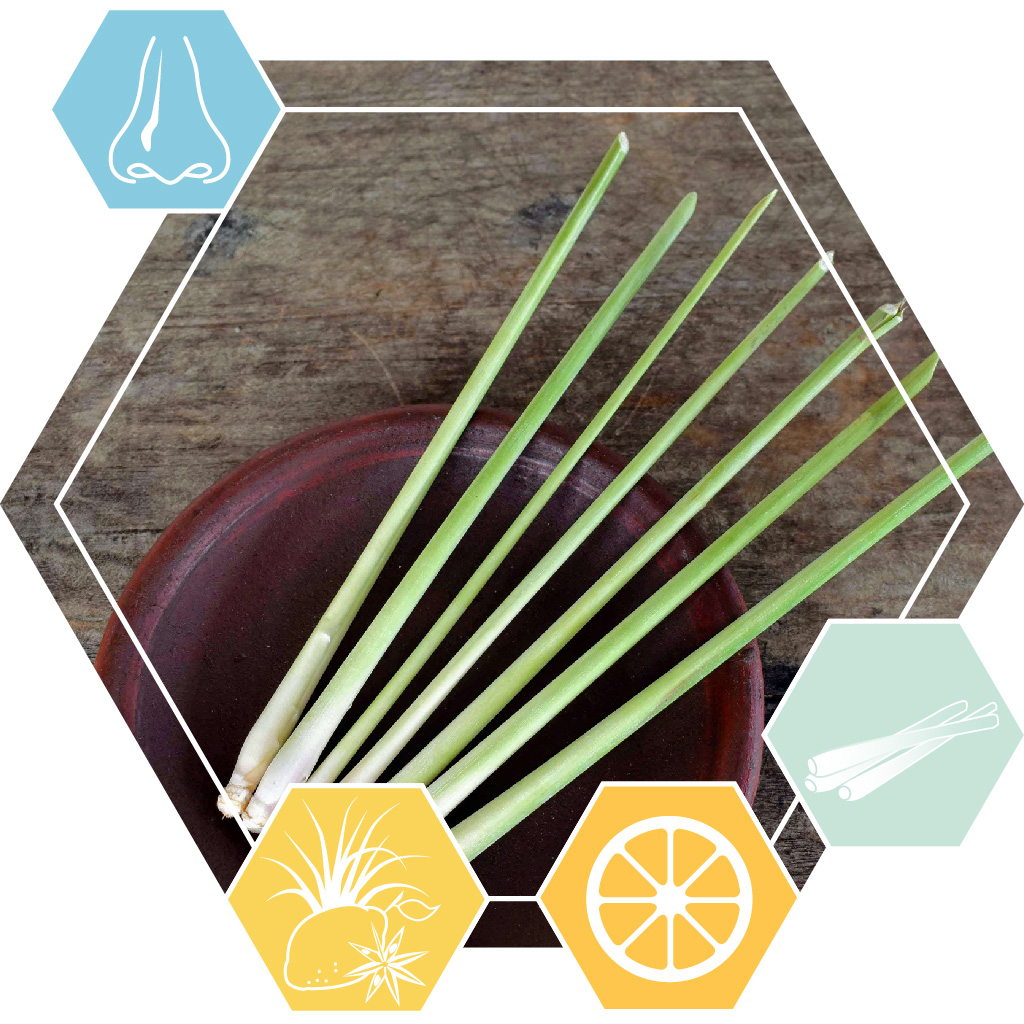Fragrance raw material
Description
Essential oil Lemongrass is an essential oil for use as a fragrance material. Use the oil for example in perfume, cosmetics and other scented products.
Use
Essential oil Lemongrass has a green citrus scent. Not a very strong smell, but it can easily dominate in compositions, so using a dilution of, for example, 10% in DPG can be useful. It combines well with green, citrus and spicy scents, but also with wood. You usually use between 0,1% and 10% of this oil in the fragrance composition. It is mainly a heart note in perfumes. Chemically not very stable in soap, but it is often used in that. If dosed high enough, there is often enough scent left behind to form an acceptable soap perfume.
Store cool, dry and dark.
Properties
Essential oil Lemongrass is a pale yellow to orange-yellow liquid at room temperature. The substance has a fairly long shelf life. The oil is made by steam distillation from the upper parts of Cymbopogon flexuosus (Nees ex Steud.) W.Watson, AKA lemongrass. Like any essential oil, this one is a mixture of various substances. An indication of the composition is the following:
25% - Citral
5-10% - Camphene, Geraniol,Limonene, Myrcene
2-5% - Geranyl Acetate, Linalool, Methylheptenone
1-2% - beta Caryophyllene, Citronellol, Farnesol, alpha Terpineol
This essential oil lemongrass is a pure natural essential oil. The lemongrass used to make this oil was not grown with use of artificial fertilisers and with no (or little) use of pestricides.
Packaging
The 10 and 50 ml packaging is made of brown glass with a child-resistant black cap. The 250 g package is made of aluminium with a white cap. The 250 g packaging is not sold to private customers because it does not have a child-resistant cap.
Dangers
Essential oil Lemongrass is classified as a hazardous substance, with the following characteristics:
DANGER
H304 - May be fatal if swallowed and enters airways.
H315 - Causes skin irritation.
H317 - May cause an allergic skin reaction.
H318 - Causes serious eye damage.
H411 - Toxic to aquatic life with long lasting effects.
It contains various allergens, such as citral, geraniol, geranyl acetate, limonene, linalool, eugenol and isoeugenol.
Codes
Item number: 20109
Dutch name: Etherische olie Citroengras
EC number: 295-161-9
CAS Number EU: 91844-92-7
CAS Number TSCA: 8007-02-1
FEMA Number: 2724
ADR: 9/III
UN number: 3082
INCI: CYMBOPOGON FLEXUOSUS HERB OIL




